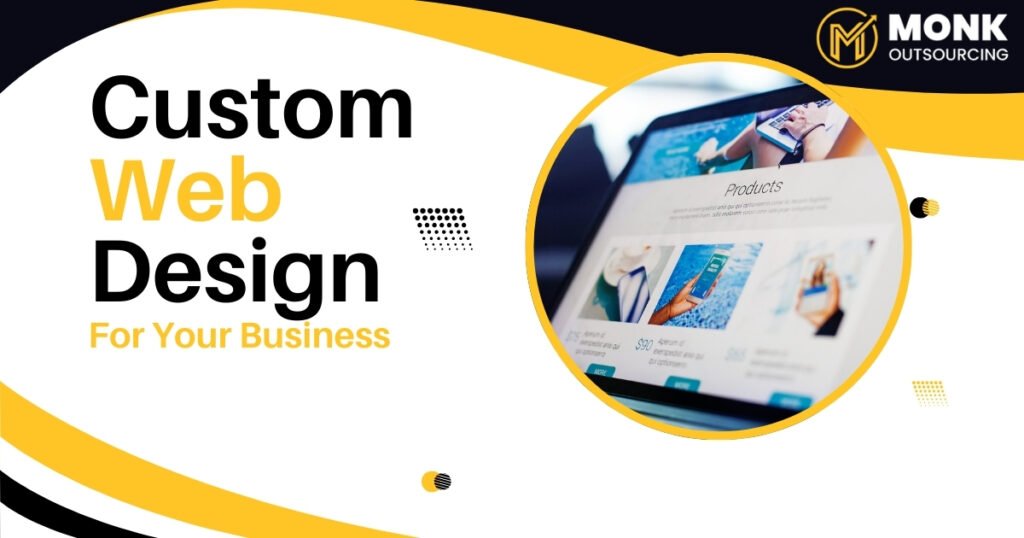In today’s digital-first world, a corporate website serves as the face of a business, offering a direct line to potential clients, partners, and customers. For businesses that want to succeed online, ensuring their website is not only functional but also optimized for user engagement is key. One of the most effective ways to achieve this is by leveraging website design services that cater specifically to the needs of corporate users. In this article, we’ll explore the best practices for custom web design that can help businesses maximize user engagement, improve conversions, and create lasting impressions.
Why User Engagement Matters for Corporate Websites
User engagement is the foundation of a successful online presence. For corporate websites, engaging users is crucial because it directly impacts brand loyalty, customer retention, and overall business growth. A well-engaged user is more likely to return, share your content, and become a paying customer. In contrast, a website that fails to engage visitors can quickly lead to high bounce rates and lost opportunities.
Key Benefits of Custom Web Design
Custom web design plays a vital role in enhancing user engagement. Unlike template-based designs, a custom web design allows a corporate website to be tailored specifically to the company’s goals, target audience, and brand identity. Some key benefits include:
- Unique User Experience: Custom designs ensure the website is user-centric, offering seamless navigation and an intuitive interface that keeps users engaged.
- SEO Optimization: A bespoke design allows better integration of SEO practices, helping the site rank higher in search engine results.
- Improved Branding: Custom web design allows businesses to incorporate their brand’s colors, typography, and messaging, enhancing recognition and trust.
Best Practices for Maximizing User Engagement through Corporate Website Design
1. Understand Your Audience
Before diving into the design process, it’s essential to understand the needs and behaviors of your target audience. Who are your website visitors? What are they looking for? By understanding your audience’s preferences, you can create a custom web design that aligns with their expectations, making it easier for them to navigate your site and take the desired actions.
2. Prioritize Mobile-First Design
More and more users are browsing websites on mobile devices, making it essential for corporate websites to be fully responsive. A mobile-first design ensures that your site is optimized for all screen sizes, providing a consistent and engaging user experience regardless of the device being used. Google also considers mobile-friendliness as a ranking factor, so this approach can boost your SEO efforts as well.
3. Speed Matters: Optimize Load Time
Website loading speed is critical for keeping users engaged. Slow-loading websites frustrate users and increase bounce rates. According to studies, a delay of just one second in load time can reduce conversions by 7%. For corporate websites, this can mean significant lost revenue. Optimizing images, using caching strategies, and minimizing unnecessary scripts can help improve site speed.
4. Clear Call-to-Actions (CTAs)
A successful corporate website guides users toward specific actions, whether it’s making a purchase, filling out a contact form, or signing up for a newsletter. Well-placed, clear call-to-actions (CTAs) are essential for maximizing engagement. Use compelling language, and ensure CTAs are visible and easily accessible on every page.
5. Consistent and Professional Branding
Your website should consistently reflect your company’s values, culture, and professionalism. A custom web design ensures that your website aligns with your brand identity, from color schemes to typography. This consistency builds trust and makes your brand more memorable.
6. Interactive Features and Content
Engagement is not just about visuals; interactive elements play a major role in keeping users engaged. Incorporate features like live chat, surveys, and interactive infographics to encourage users to interact with the content. Rich, engaging media, such as videos, animations, and dynamic elements, also help capture attention and hold it longer.
7. Simplify Navigation
A website’s navigation should be simple, intuitive, and easy to follow. Corporate websites can often be complex, with multiple services, products, or departments. By organizing content into logical categories and using clear menu items, users can find what they’re looking for without frustration. A well-structured website layout encourages users to explore further.
8. Focus on Content Quality
Content is king when it comes to both SEO and user engagement. High-quality, relevant content answers users’ questions, provides value, and encourages them to engage with your brand. Regularly updating your content, whether through blog posts, case studies, or product updates, keeps visitors coming back for more.
9. Incorporate Social Proof
Adding customer testimonials, case studies, and client logos can increase credibility and trust, which leads to higher user engagement. Visitors are more likely to trust your services if they see that others have had positive experiences with your brand.
10. Regular Website Maintenance
A corporate website requires ongoing attention to ensure that it remains optimized, secure, and relevant. Regularly checking for broken links, outdated content, and performance issues is crucial for keeping users engaged. A website that is well-maintained runs smoothly and is more likely to deliver a positive user experience.
How to Measure User Engagement

Measuring user engagement is vital for understanding whether your website design strategies are working. Some key metrics to monitor include:
- Bounce Rate: A high bounce rate indicates that users are leaving the site quickly. If this happens, it may be time to reevaluate your design and content strategy.
- Time on Page: The longer users spend on a page, the more engaged they are. Aim for content that keeps visitors on your site for longer periods.
- Conversion Rate: The ultimate goal of user engagement is to convert visitors into customers. Tracking conversion rates for CTAs can help measure success.
SEO and User Engagement: A Perfect Pair
Optimizing your corporate website for SEO goes hand-in-hand with user engagement. By designing a website that is not only visually appealing but also optimized for search engines, you increase the chances of attracting quality traffic. A custom web design that incorporates best SEO practices will help your website rank higher and keep visitors engaged longer.
Conclusion
In conclusion, user engagement is a critical factor for the success of any corporate website. By implementing best practices in website design services, such as mobile optimization, speed enhancements, clear CTAs, and interactive content, businesses can create a website that not only attracts visitors but keeps them engaged and drives conversions. If you’re looking to elevate your online presence, partnering with a reputable web design company like Monk Outsourcing can help you implement these strategies effectively.
Read More Blogs – https://bloggingleads.com/





